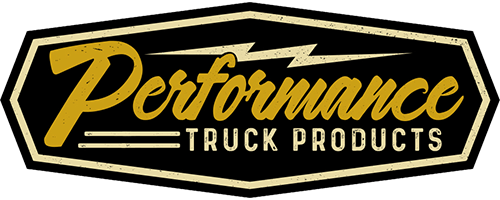Posted by TN on May 3rd 2024
How to Safely Tow a Trailer with a Performance Truck
Photo by Courtney Sargent from Pexels
Towing a trailer with a performance truck requires more than physical strength; it demands a keen understanding of the vehicle’s capabilities. Handling such powerful machines while ensuring safety is paramount.
A performance truck, equipped with a robust engine and sophisticated technology, presents unique challenges when used for towing. Each feature and component plays a crucial role in towing safely and efficiently.
Approaching this task with the right knowledge and precautions is essential to prevent mishaps and ensure safety on the road.
Choosing the Right Trailer Hitch
Selecting the appropriate trailer hitch ensures safety and stability when towing with a performance truck. It's essential to understand the different types of hitches available and choose one that matches the towing requirements of both your vehicle and trailer.
Hitches come in various forms, each designed for specific types of loads and towing scenarios:
●Weight-carrying Hitches: These are straightforward in design and best suited for lighter, smaller trailers. They mount directly to the vehicle's frame, offering a basic towing solution without additional load-distributing mechanisms.
●Weight-distributing Hitches: Ideal for heavier loads, these hitches include spring bars that help distribute the trailer's tongue weight across the truck’s axles. This type of hitch is crucial for maintaining vehicle stability and control, especially with larger trailers.
●Gooseneck and Fifth-wheel Hitches: These are used for the heaviest loads and connect inside the truck's bed, providing enhanced stability and a higher towing capacity. They are commonly used in commercial towing and for transporting large recreational vehicles.
Proper Weight Distribution
Understanding and achieving proper weight distribution is key to towing safely with a performance truck. Poor distribution can lead to trailer sway, reduced handling, and increased wear on your vehicle.
Proper weight distribution ensures that the trailer's load is evenly spread across its axles and the truck’s towing axis. This balance is critical for maintaining control of both the truck and the trailer, particularly at higher speeds or in difficult driving conditions.
Here are some tips on how to ensure good weight distribution:
●Check Trailer Tongue Weight: The weight pressing down on the hitch should be about 10-15% of the total trailer weight. This helps keep the trailer stable and reduces the risk of sway.
●Use Weight Distribution Systems: For heavier loads, consider a weight distribution hitch. It uses tension to help distribute the load evenly across the truck's axles.
●Balancing Cargo Within the Trailer: Place heavier items low and near the axle(s) of the trailer. Avoid placing heavy items at the rear, as this can induce sway and instability.
Navigating and Maneuvering
Maneuvering a performance truck with a trailer attached presents a set of challenges that require careful handling and awareness, particularly in varied weather conditions.
Adjusting your mirrors to ensure optimal visibility is crucial. Properly positioned mirrors help you see beyond the dimensions of your trailer, reducing blind spots and increasing safety when changing lanes or turning. Additionally, considering the different types of wiper blades can enhance your visibility in adverse weather conditions, ensuring you maintain clear sightlines despite rain or snow.
Driving at slow speeds is also vital during maneuvers. This allows you more time to react to potential hazards and provides better control over your truck and trailer.
When reversing, take it slow and, if possible, use a spotter to guide you. This practice helps avoid obstacles out of your immediate line of sight. Reversing with a trailer is not intuitive, as steering adjustments are opposite to normal driving directions; practicing in an open area before hitting congested spots can build your confidence and skill.
Safe Braking Techniques

Photo by Alex Jumper from Unsplash
Understanding and applying safe braking techniques is crucial when towing a trailer with a performance truck, given the significant impact of additional weight on your stopping distances and overall braking effectiveness.
To ensure effective braking while towing, it's important to have an appropriate braking system. If your performance truck isn’t equipped for heavy loads, consider upgrading to a system designed for high performance and additional weight, such as larger brake rotors or multi-piston calipers.
Trailers with significant weight should also have their braking systems. This not only relieves some of the stress on your truck's brakes but it also enhances safety by improving the overall response during braking.
Always anticipate stops and apply the brakes gradually. Abrupt stopping can lead to dangerous situations like trailer sway or jackknifing, especially at higher speeds. Adjust your driving based on this experience to ensure safety across various driving conditions.
Regular Maintenance Checks
Regular maintenance is even more crucial when you are towing with a performance truck. Ensuring that truck and trailer are in top condition is key to safe towing.
Before and after each towing trip, conduct thorough checks:
●Tire Inspections. Ensure both the truck and trailer tires have proper inflation and sufficient tread. Incorrect tire pressure can lead to poor handling, increased wear, and potential blowouts.
●Hitch and Coupling Inspections: Check for any signs of wear or damage such as cracks or corrosion. Make sure the hitch pin and clip are securely in place and that the coupling device locks securely onto the hitch ball.
●Brake System Checks: Test the brakes on the truck and the trailer to ensure they are responsive and adequately adjusted. This is crucial for maintaining control, especially in emergency braking scenarios.
●Lighting and Electrical Systems Checks. Verify that all lighting—including brake lights, turn signals, and headlights on the truck and trailer—is fully operational. This ensures visibility and communication with other drivers.
●Fluid Levels Check: Regularly check oil, coolant, and other fluid levels in your truck to ensure optimal engine performance and prevent overheating, especially under the extra strain of towing.
●Suspension System Checks: Inspect the suspension components of both the truck and trailer for signs of stress or failure. Good suspension is critical for stable towing and to handle the additional weight.
Wrapping Up
Safely towing with a performance truck requires careful attention to detail, from selecting the right hitch to maintaining proper vehicle condition. By following these guidelines, you can ensure a safe and efficient towing experience, protecting both your equipment and your peace of mind.


